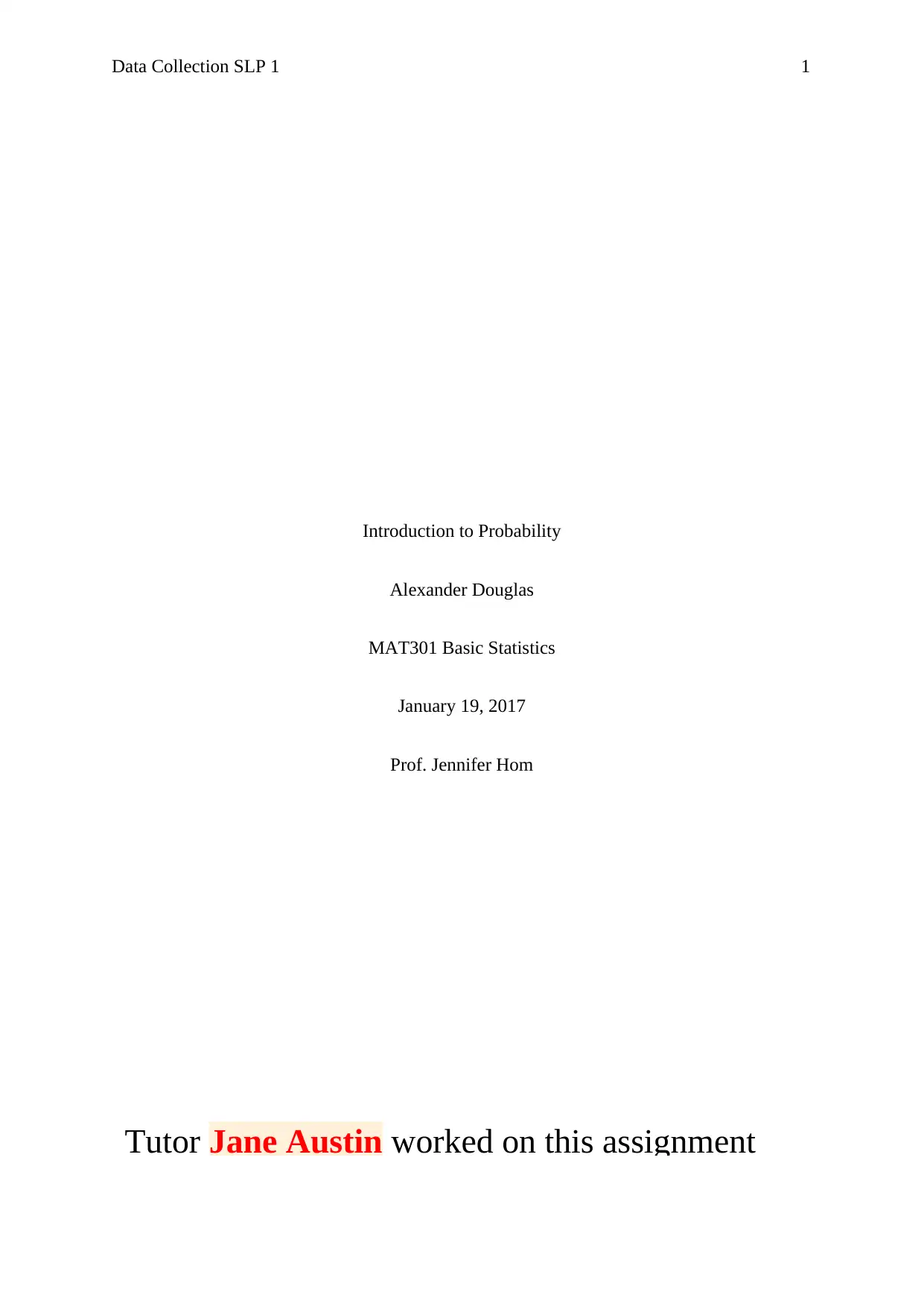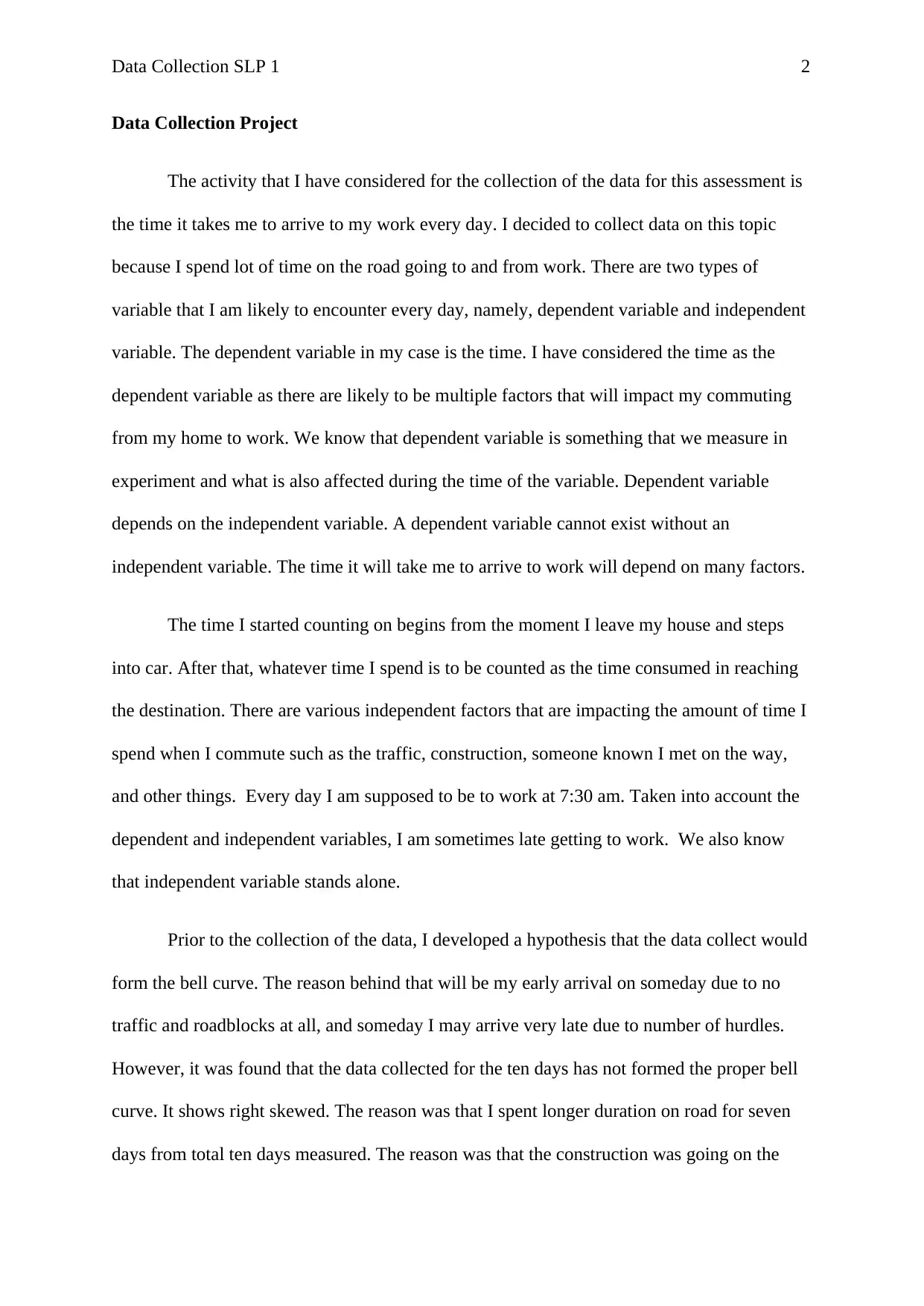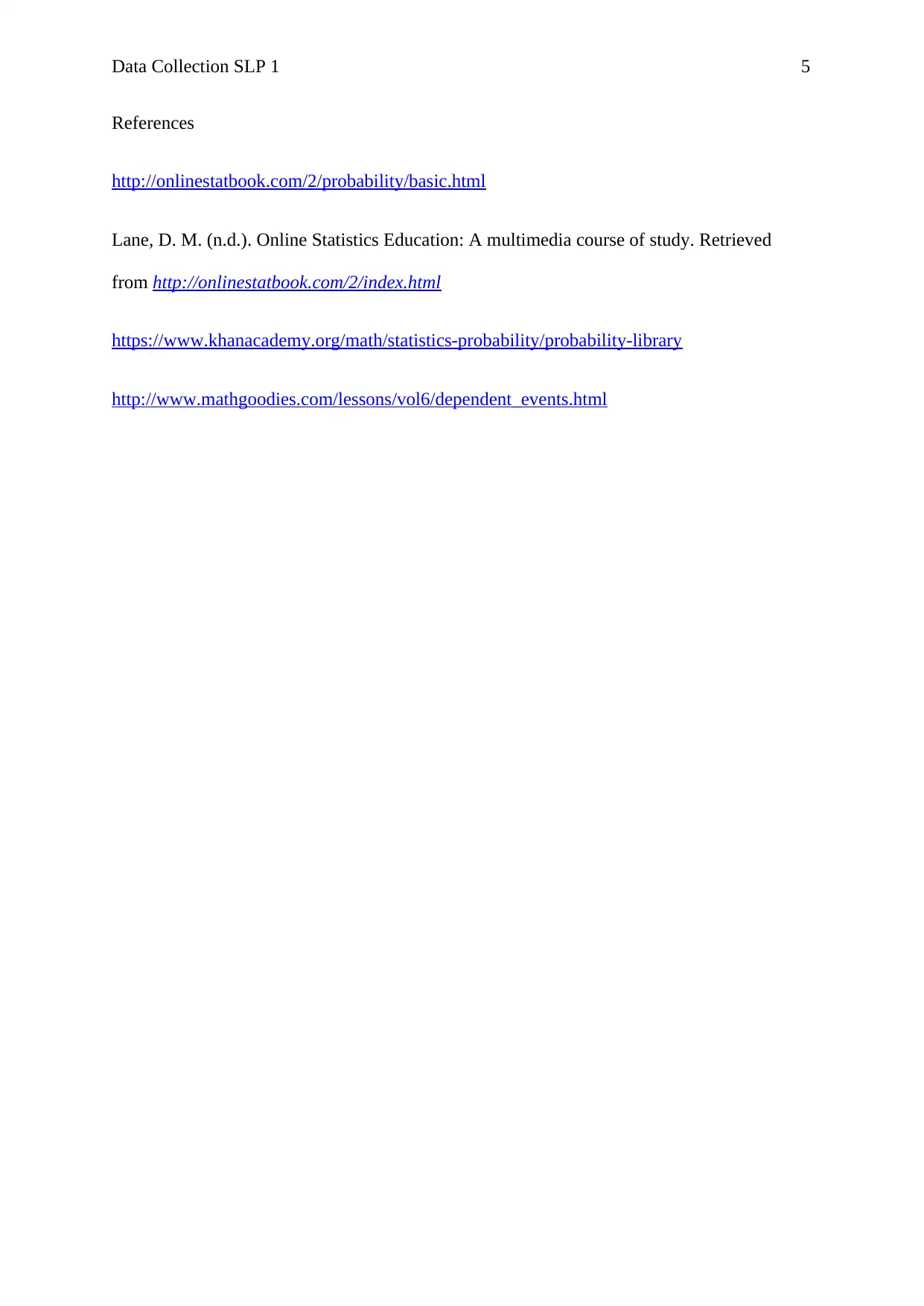Data Collection and Probability Analysis
VerifiedAdded on 2019/09/20
|5
|1015
|242
Project
AI Summary
The assignment is an introduction to probability, where the author collected data on their daily commute time and analyzed it using concepts such as dependent and independent variables. The data showed a right-skewed distribution, indicating that the average time spent commuting was higher than expected due to construction delays. The author calculated the probability of arriving on time, finding that it was 70%. Additionally, the table provided shows the data collected for the 10-day period, including time in and out of work, launch break, and total minutes worked.
Contribute Materials
Your contribution can guide someone’s learning journey. Share your
documents today.
1 out of 5
![[object Object]](/_next/static/media/star-bottom.7253800d.svg)





